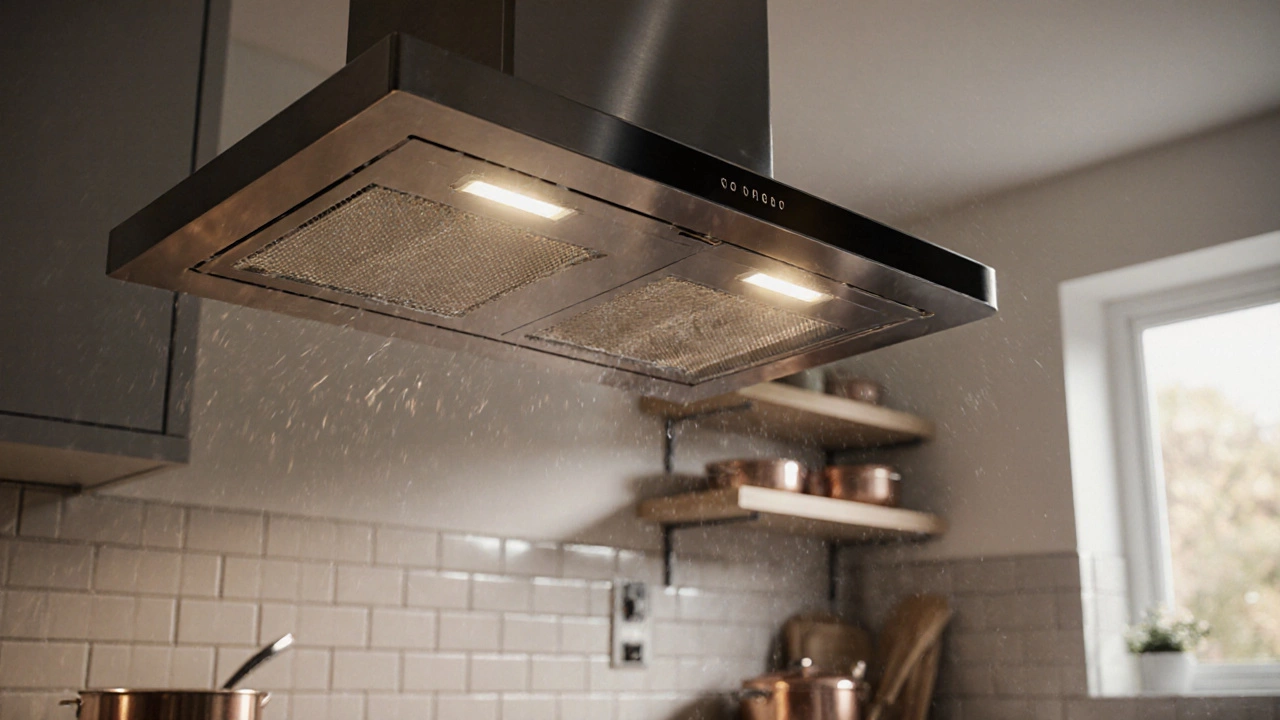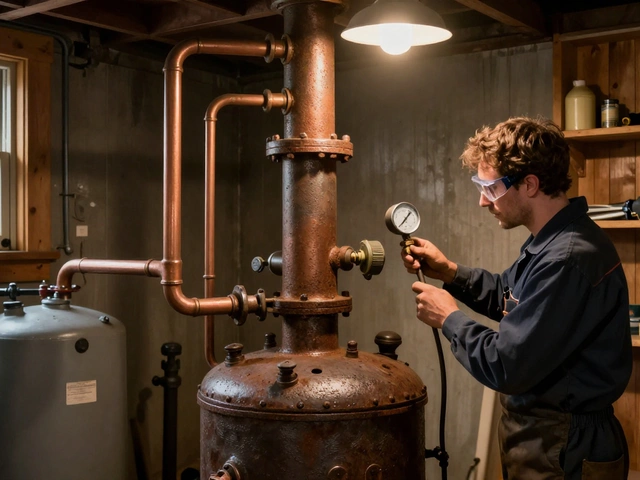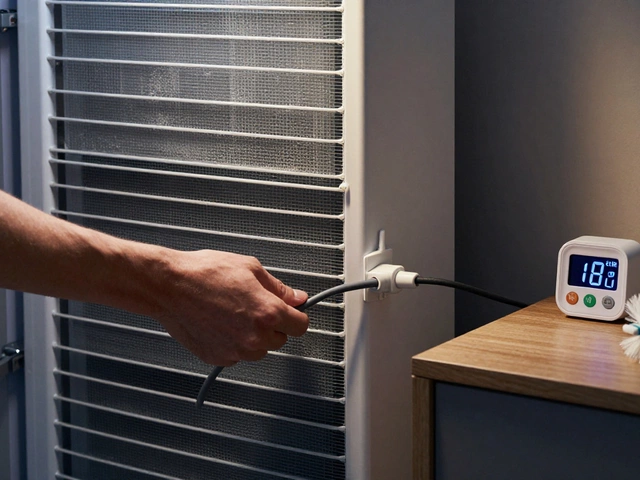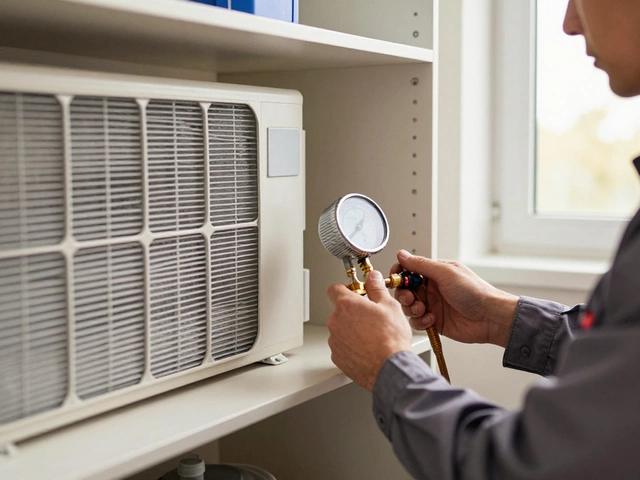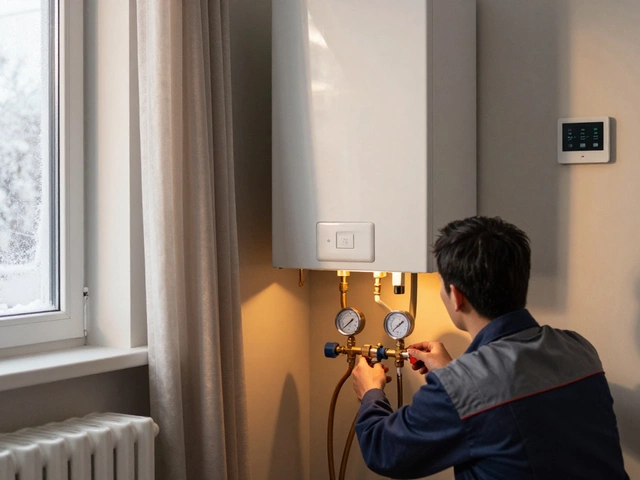Extractor Fan Repair Time Calculator
Select Repair Scenario
Skill Level
How It Works
This calculator uses real-world data from the article to estimate repair time based on:
- Problem type
- Mounting accessibility
- Part availability
- Skill level
Key Factors
Estimated Repair Time
Based on your selections:
When a kitchen's extractor fan is a ventilation device that pulls moisture, smoke, and odors out of the cooking area starts humming loudly, rattling, or simply refuses to turn on, most homeowners ask the same question: extractor fan repair time?
Typical Problems That Trigger a Repair Call
Before you can estimate how long a fix will take, you need to know what you’re dealing with. The most common issues are:
- Motor burnout - the heart of the fan that spins the blades.
- Capacitor failure - a small electrical component that gives the motor the initial boost.
- Worn or broken fan blade - can cause wobbling and noisy operation.
- Faulty switch or remote control - prevents the fan from receiving a start signal.
- Clogged vent duct - restricts airflow and makes the motor work harder.
- Loose wiring or poor electrical connections - cause intermittent power loss.
Each of these problems has a different repair path, which directly influences how many hours (or days) you’ll spend on the job.
Factors That Influence Repair Duration
Even if two fans have the same fault, the time needed to fix them can vary wildly. Keep these variables in mind:
- Accessibility - Is the fan installed under a countertop, behind a cabinet, or in a ceiling hatch? Tight spaces mean slower disassembly.
- Part availability - Some manufacturers stock replacement motors locally, while others require a week‑long order.
- Skill level - DIY novices will need extra time for safety checks and learning curves.
- Electrical complexity - Older homes may have outdated wiring that must be inspected or upgraded.
- Scope of the job - Replacing a simple capacitor takes minutes; a full motor swap plus duct cleaning can stretch to several hours.
DIY Repair Timeline - Step‑by‑Step
If you’re comfortable handling basic electrical tasks, here’s a realistic schedule for tackling the most common faults yourself.
- Safety first (15 min) - Turn off power at the breaker, verify with a voltage tester, and gather tools (screwdrivers, multimeter, socket set).
- Remove the fan housing (10-30 min) - Depending on mounting, you may need to unscrew a few brackets and pull the unit out. Vent duct is the channel that carries air from the fan to the outside may need to be detached.
- Diagnose the component (20-40 min) - Use a multimeter to test the motor windings, check the capacitor with a capacitance meter, and inspect the fan blade for cracks.
- Order or locate the replacement (varies) - If the part is in stock at a local hardware store, you can pick it up within an hour. If it needs shipping, add 2‑5 days.
- Swap the faulty part (15-45 min) - Motor provides the rotational force that turns the fan blade replacement involves disconnecting wires, securing the new motor, and re‑tightening mounting brackets. For a capacitor, it’s usually a quick clip‑in.
- Re‑assemble and test (10-20 min) - Reattach the vent duct, secure the housing, restore power, and listen for smooth operation.
Summing the best‑case scenario (everything in hand, easy access) lands you at roughly 1.5 hours. In a typical DIY situation with part ordering, you’re looking at 3‑5 hours spread over a couple of days.
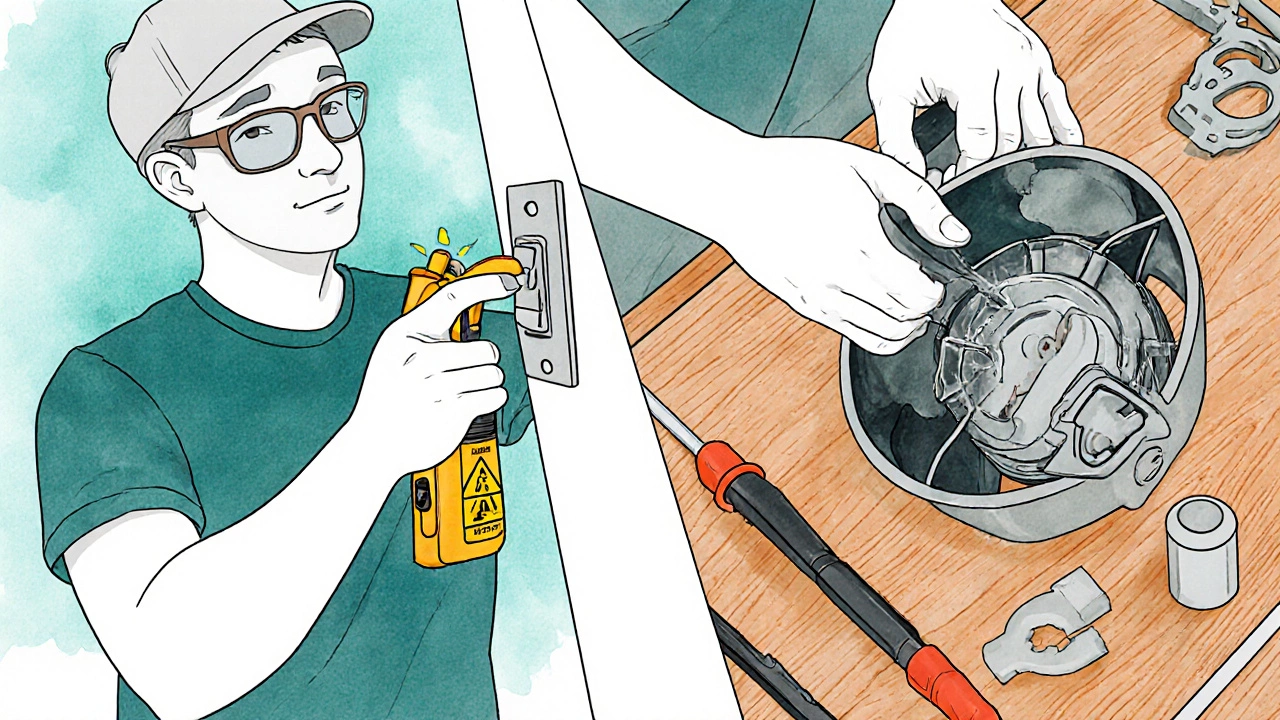
Professional Service Timeline - What to Expect
When you call a certified Professional technician is a trained specialist who diagnoses and repairs household appliances, the process is streamlined but still bound by the same variables.
- Initial call and scheduling - Most companies can book a same‑day visit if slots are open (30 min to 2 hours for booking coordination).
- On‑site diagnosis - Technicians typically spend 15‑30 minutes running tests and confirming the faulty part.
- Part procurement - If the part is in the company’s inventory, the repair starts immediately. Otherwise, they order it and return within 1‑3 business days.
- Repair execution - Motor or fan‑blade swaps average 45‑60 minutes. Capacitor fixes are under 20 minutes.
- Final testing and cleanup - 10‑15 minutes to verify airflow, check for noise, and tidy the work area.
In practice, customers who have the part on hand see a total service window of about 1‑2 hours. If the part must be ordered, the overall timeline stretches to 2‑4 days including travel and re‑visit.
DIY vs. Professional - Quick Comparison
| Option | Typical Time | Cost Estimate | Skill Required | Warranty |
|---|---|---|---|---|
| DIY (simple capacitor) | 30‑45 min | $0‑$20 (parts) | Basic electrical safety | None |
| DIY (motor replacement) | 1‑2 hrs + part lead‑time | $50‑$150 | Intermediate (wiring, mounting) | None |
| Professional service | 1‑2 hrs (on‑site) + possible 1‑3 days for parts | $120‑$250 (labour + parts) | None (technician handles) | 6‑12 months on repair |
Use this table as a decision aid. If the fan is still under warranty, most manufacturers require a professional to avoid voiding coverage.
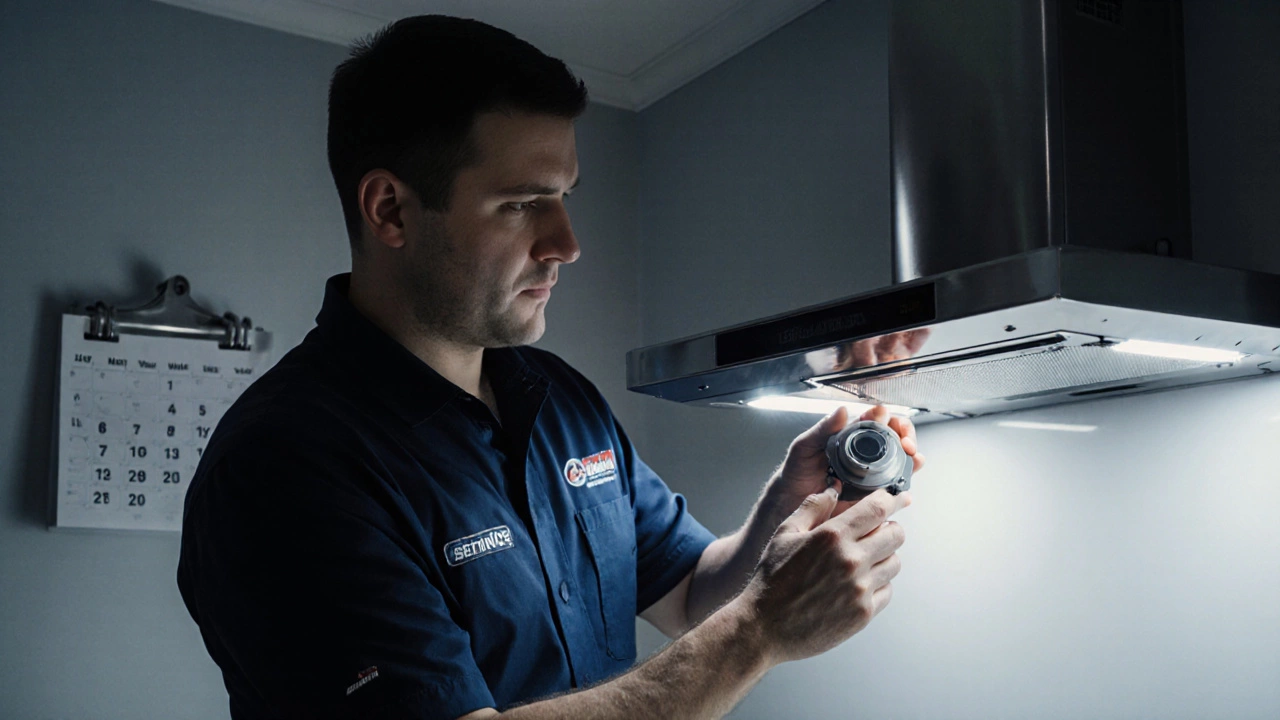
Pro Tips and Common Pitfalls
- Always test the fan after re‑assembly before closing the cabinet - you’ll hear any residual wobble immediately.
- When dealing with the Capacitor stores a short burst of electricity to help start the motor, discharge it with a resistor or insulated screwdriver to prevent shock.
- Check the Fan blade is the rotating part that pushes air through the duct for dust buildup; a clean blade improves efficiency and may extend the motor’s life.
- If the vent duct is excessively long or has multiple elbows, consider a booster fan - this adds a step but reduces motor strain.
- Document the serial number of the fan before you order parts; manufacturers often have exact‑fit replacements only for specific models.
Frequently Asked Questions
How long does a simple capacitor replacement usually take?
A capacitor swap typically requires 15‑20 minutes of on‑site work. The biggest delay is getting the correct part, which can be a quick in‑store pick‑up or a 2‑day shipment.
What signs tell me the motor has failed?
If the fan hums but doesn’t spin, or if it makes a grinding noise, the motor windings are likely burned out. A multimeter reading of zero continuity confirms the fault.
Can I repair an extractor fan that is still under warranty?
Most manufacturers require an authorized service technician for warranty work. Attempting a DIY fix can void the warranty, so call the brand’s support line first.
Is it safe to work on the fan’s wiring myself?
If you have basic electrical knowledge and always turn off the breaker, short repairs are safe. For anything involving the house’s main circuit, hire a licensed electrician.
Why does my fan run slower after I clean the vent duct?
A cleaned duct reduces back‑pressure, allowing the motor to run at its designed speed. If you notice a slower spin, the motor may be wearing out and need replacement.
